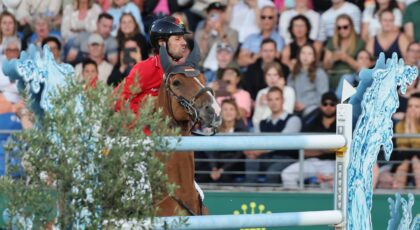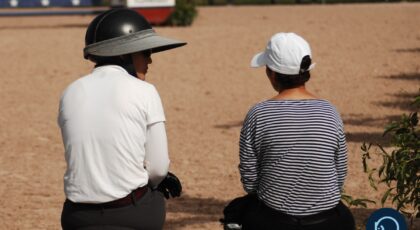Like many adult riders, I started my equestrian obsession at a very young age.
Since riding lessons at the age of eight, a majority of my life has featured horses at the center of it. From trail riding to playing polo, I’ve pretty much done it all.
Or so I thought, until recently.
Two years ago, I began volunteering at a horse rescue. I had recently been through a big breakup and was looking for something to occupy my time and mind on the weekends. At 26 years old, I hadn’t actually owned or ridden a horse since my parents divorced and sold the family farm right before I went to college.
The world of horse rescue is, quite literally, a different animal from the fancy barns and riding facilities I was used to. Instead of large, well-bred and well-cared-for horses, the ones that rescues take in are severely malnourished, injured and emotionally scarred from beatings and neglect. Often senior horses or horses with no handling, many are completely unsound or totally green. Sometimes, they are almost entirely feral. And sometimes, they don’t live much longer past their arrival due to the severity of their condition.
Despite all this, the object of most rescues is to nurse as many horses as they can back to health and then rehome them to caring new owners— in short, to give them a new lease on life.
It was an eye-opening and emotional experience to meet the horses that lived at the rescue. I didn’t walk in with the intention of adopting a horse. But over the days that I spent scrubbing water buckets and mucking stalls, I couldn’t help but fall in love with one horse in particular.
A little 15.1 hand sorrel mare with a gorgeous white star and stripe that swirls down into a lopsided snip on her nose, Gracie was visually striking from the start. The problem: nobody could get near her. She was missing a large chunk of wither from repeated exposure to a violent stud, and had undergone multiple surgeries. She was pretty, but “night-mare-ish” in temperament. Deemed permanently unsound due to her back injuries, she had been at the rescue for several years without much interest from potential adopters.
On my first day, I was advised to give her a wide berth.
I’m the first to admit I’m a little bit crazy for neurotic horses. I did ride Arabians for many years, after all. So I wasn’t phased one bit. And since I had a feeling that this horse needed someone as much as I did, I decided to make Gracie my “project horse” and officially adopted her on Valentine’s Day of 2015.
It has been over two years, and that once surly mare now allows me to groom her, take her for walks and snuggle right up to her as she grazes. It’s been a rough road at times, but we grow together every day.
People often ask me how I justify having a horse that I can’t ride.
Well, let me put it this way: sometimes I do miss riding my own horse. But Gracie offers so much more that truthfully, her ability to be ridden never even factored into my decision to adopt her—and over this short amount of time, my unrideable horse has brought me more places than I ever imagined possible.
See, when I spent my years riding, action often became a crutch, or at the very least concealed the real work to be done in my relationship with Buck, my horse at the time. It was easy to throw a saddle on and go through the routine of a daily ride without having to focus on basic ground work, body language and communication. I would demand, he would (sometimes) acquiesce. But because our relationship relied solely on the practical issue of rider control, he and I never truly progressed and improved as horse and rider.
The beauty of inaction is that it most often requires silence. It requires quiet, not just in voice, but in the body. And quiet yields the truth—about Gracie, about me, about this vast life we each try to navigate every day.
I have learned far more about how to communicate with my horse by sitting in the grass and watching the way she moves, where she directs her attention and the ways in which she interacts with other horses. And in turn, I have learned far more about myself as a person and in my role as a horse owner. I am more patient, more compassionate. We have an incredibly strong bond because our interactions are always a conversation, rather than an argument.
I have gained more clarity, insight and inner peace walking beside my horse than I ever did on the back of one, and that is a gift I’ll always be grateful for.
About the Author
Cassidy is a professional copywriter and full-time horse enthusiast. She enjoys playing in the creek with her 17-year-old mare, Gracie, and eating french fries.


 June 19, 2017
June 19, 2017 
























